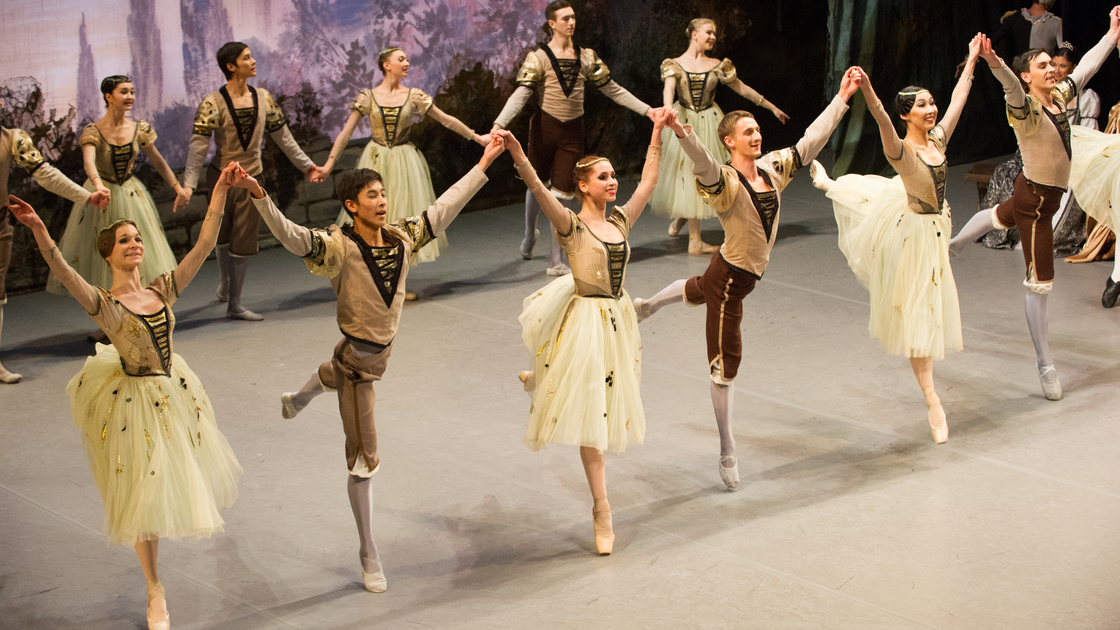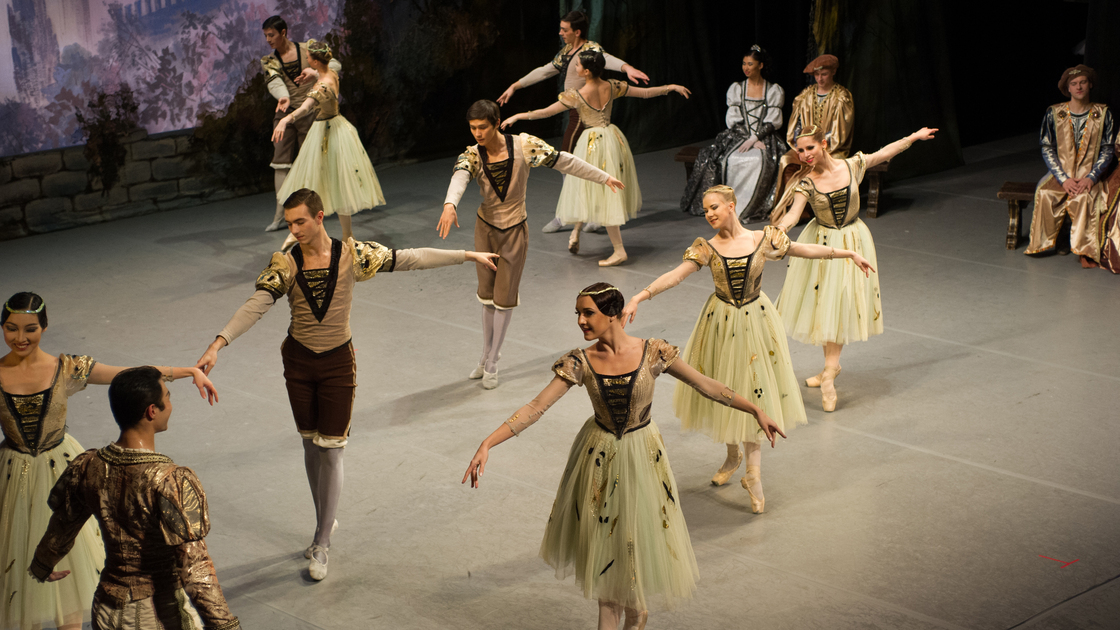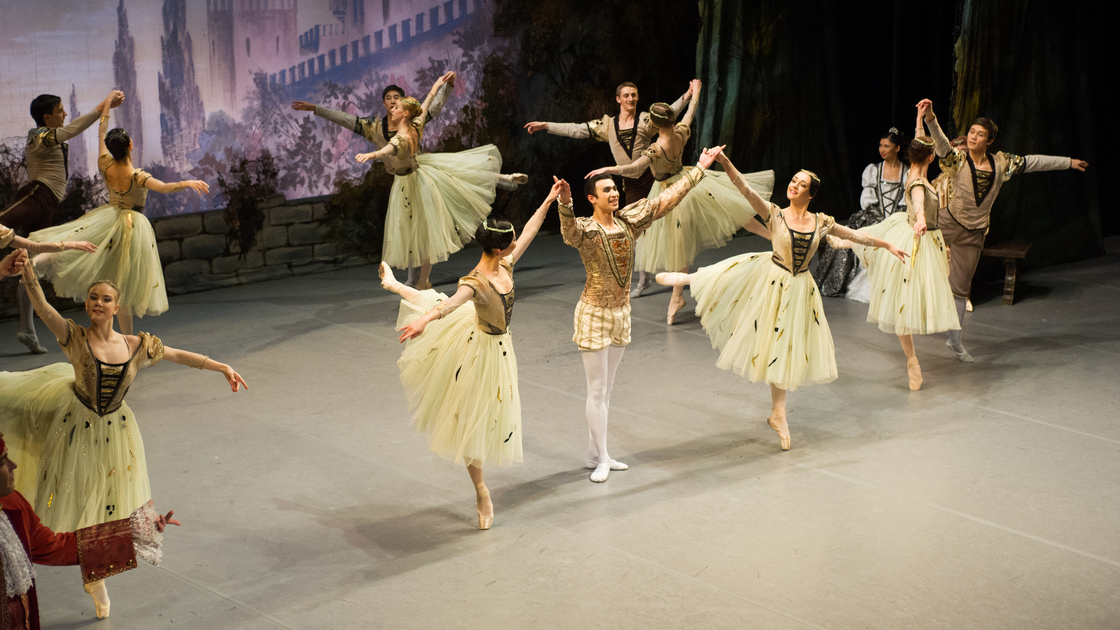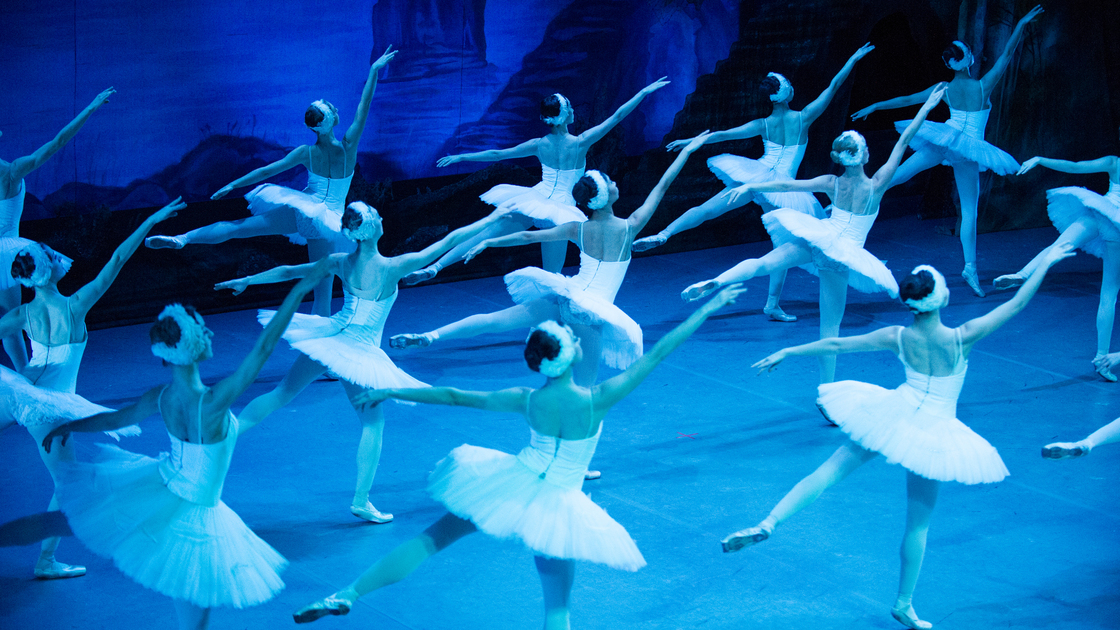EDMOND—The Russian National Ballet Theater performed Swan Lake to crowds of 596 and 634 on January 26 and 27 at Armstrong Auditorium.
This version of Tchaikovsky’s classic ballet whisked concertgoers to a castle garden where the guests are celebrating Prince Siegfried’s (Aidos Zaikan/Nurlan Kinerbaev) coming-of-age party. A jester entertained the guests with acrobatic pirouettes and wide split jetés. That night, Siegfried was drawn to a lake by the evil sorcerer Rothbart (Eldar Sarsenbayev/Eveniy Rudakov).
At the lake, Siegfried sees a swan that turns into a woman—the delicate Odette (Olga Gudkova). Suffering under a spell cast by Rothbart, Odette and her companions transform into swans by day. Siegfried and Odette share an exquisite pas de deux, with a series of grande jetés when Odette soars well above Siegfried’s head, supported by his steady hands. At dawn, Odette becomes a swan.
In Act ii, the prince is drawn away from five princesses by the “black swan,” Odile (Maria Klueva), whom he mistakes for Odette. She is being used by Rothbart to trick Siegfried into betraying Odette. The princesses from Hungary, Russia, Spain, Italy and Poland then each perform dances reminiscent of their country’s musical and dance heritage. Siegfried and Odile also share a pas de deux, accompanied by the high strains of a solo violin. Odile then cycles through 32 fouettés (spinning 32 consecutive times on one foot and extending the leg at the front). Siegfried declares Odile will be his bride, not seeing Odette at the window. Suddenly he is awakened by seeing a vision of Odette. He hurries away to the lake to find her.
Siegfried bursts on the scene and fights Rothbart. It seems he has lost but when Siegfried and Odette are together, with the help of the swans, they overcome Rothbart’s magic by the power of true love and he stumbles to the ground dead. The spell has been broken; the radiant sun of a new day dawns on the couple as the music peaks and the curtain closes.
One patron who had seen ballets in Kiev, Moscow and St. Petersburg characterized the dancing of the first performance as simple and beautiful. Another patron who regularly attends ballets in Oklahoma said Monday night’s performance was among the best. One concertgoer said that “coming here makes you feel like royalty.”
One of the ballet troupe’s managers said the Russian National Ballet Theater’s strength is its adaptability. She said the company is “a real family” and that they interchange the parts: the prima ballerina one night can be the nurse maid the next night.
The manager said Armstrong Auditorium is an excellent venue for dance and ballet. She said most concert halls the company tours are designed for music performers and have smaller stages. But, the Auditorium 1,500-square-foot stage provides ample space for the scenes.
“The stage is perfect,” she said, “it’s the perfect size; it’s the perfect space.”
She also said the group loves American audiences because they are warm and enthusiastic. This is the Russian National Ballet Theater’s third appearance at Armstrong Auditorium, and several of its staff members said the dancers love the venue.
“Each time it’s amazing. It’s awesome!” the manager said.
The company formed in the late 1980s and now tours around the world. Its 60 dancers are currently on a 114-show tour of more than 100 cities in the United States. Current artistic director Elena Radchenko performed as a principal dancer in the St. Petersburg Bolshoi Ballet Company—one of the oldest in the world.
Swan Lake was first composed in 1877 by Pyotyr Ilyich Tchaikovsky but did not initially succeed. Marius Petipa and Lev Ivanov re-choreographed Swan Lake in 1895, two years after Tchaikovsky’s death. This version is the model of most modern productions of Swan Lake.
The troupe’s assistant artistic director said the Russian National Ballet Theater strives to make “authentic” and “traditional” ballets that are loyal to Russia’s cultural tradition. He said he wants the troupe’s ballets to match as close as possible with the original choreography. Still, every ballet company sets its own staging and the Russian National Ballet Theater’s changes are minor: the new happy ending, the addition of the jester (added in a 1951 Kirov production), and some choreography inspired by Russian ballet choreographer Yuri Grivorivich. The troupe uses a recorded score from the Russian National Orchestra that matches their staging.
The sets and costumes were made in Russia and are medieval themed. Many of the costumes are decades old.
Armstrong Auditorium has become a regular Oklahoma stop for touring Ballet Companies. The Russian National Ballet Theater also performed Swan Lake in 2011 and returned in 2013 with Cinderella and Romeo and Juliet. The Moscow Festival Ballet performed Sleeping Beauty and Don Quixote in 2014.
Armstrong Auditorium’s concert series will host The King’s Singers on February 24. Also appearing at Armstrong this season are the Venice Baroque Orchestra with Mandolinist Avi Avital, the Academy of St. Martin in the Fields with pianist Jeremy Denk, and StepCrew.
Details and tickets are available at ArmstrongAuditorium.org.





